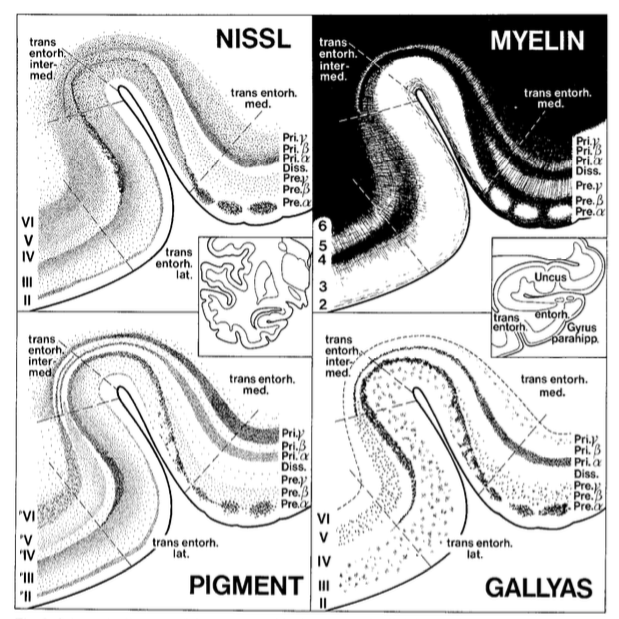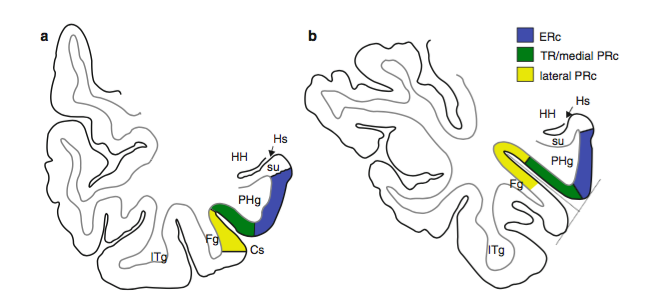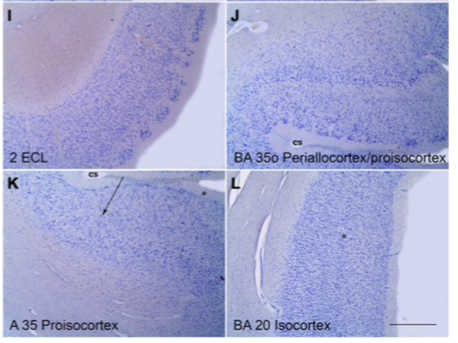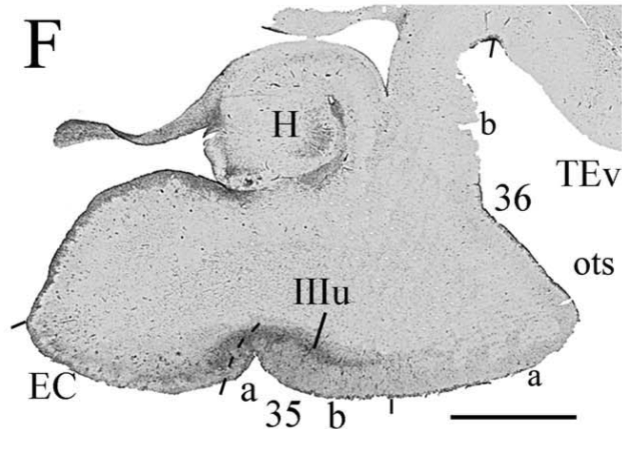
Happy #SubfieldWednesday! After a two-week hiatus we are returning to our quiz about the mysterious transentorhinal cortex!
https://twitter.com/hipposubfields/status/1319029895125737472?s=20
This quiz even stumped some of us at @hipposubfields headquarters! We had to contact a neuroanatomist to confirm which answer is correct! (or at least "the most correct")
Braak and Braak (1985) originally described the transentorhinal cortex as a 'transition region between entorhinal cortex and temporal isocortex. This rules out answer A (part of ERC) 

So, if it's not part of ERC, is it part of PRC?
Kivissari et al., (2013) describe transentorhinal (labeled TR below) as the medial part of PRC, and separate from ERC. 

According to Augustinack et al. (NeuroImage, 2013):
"[Perirhinal] area 35 and transentorhinal are somewhat synonymous terms."
"[Perirhinal] area 35 and transentorhinal are somewhat synonymous terms."
Insausti et al., (Front NeuroAnat, 2017) concur that the proisocortex of BA35 is the same as Braak and Braak's transentorhinal cortex (see panel K). 

Finally, Ding & Van Hoesen (Human Brain Mapping, 2010) describes tau lesions in BA35, which is consistent with overlap between BA35 and transentorhinal cortex. 

So, the correct answer is C: "Roughly the same as BA35"
Also note, according to both Insausti and Ding, that the location of BA35/transentorhinal cortex can vary in relationship to the collateral sulcus, depending on the depth of that sulcus!
We would also like to mention that there might be some disagreement among neuroanatomists about the definition of this area.
In fact, in the next phase of our harmonization effort, we hope to reconcile these different groupings/definitions.
In fact, in the next phase of our harmonization effort, we hope to reconcile these different groupings/definitions.
• • •
Missing some Tweet in this thread? You can try to
force a refresh









